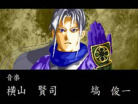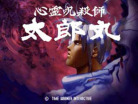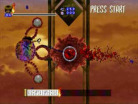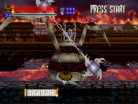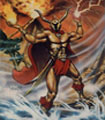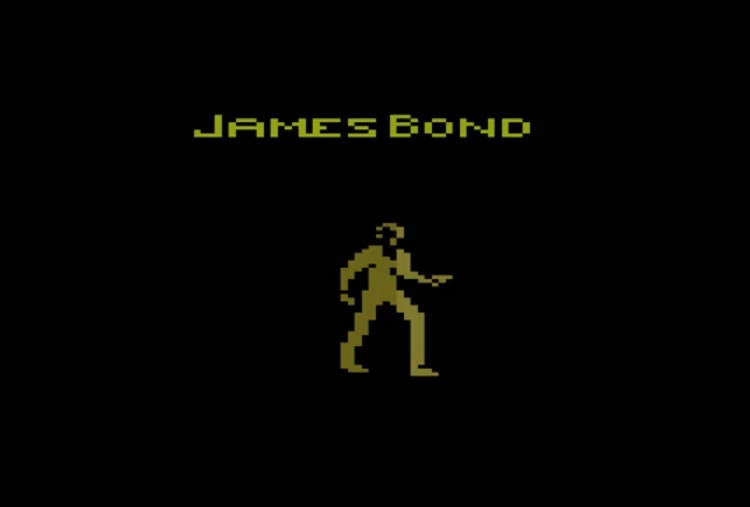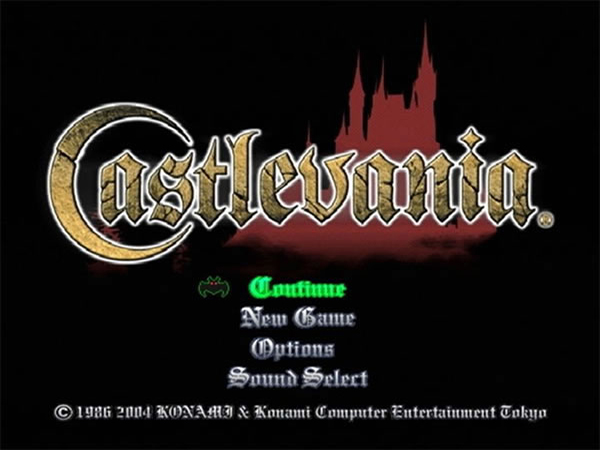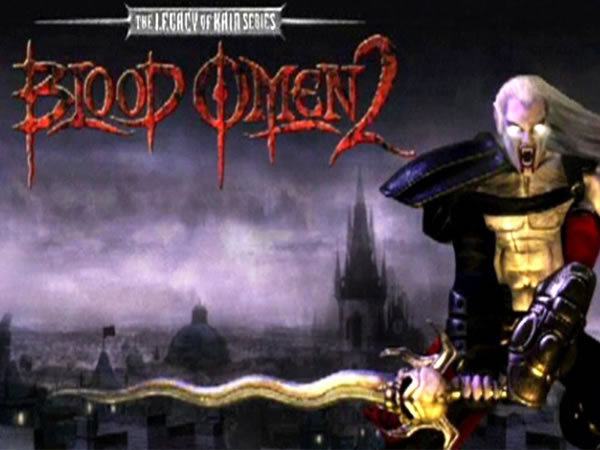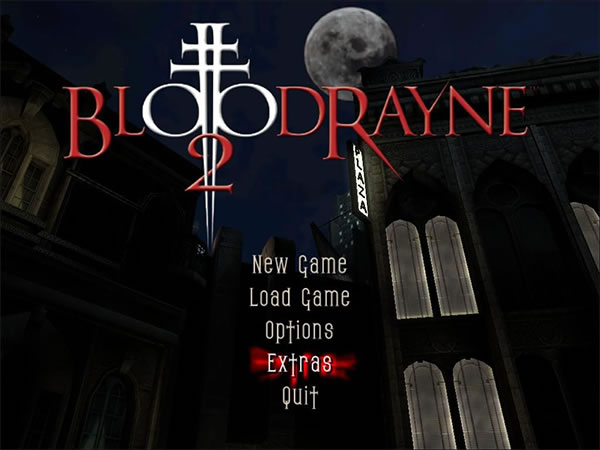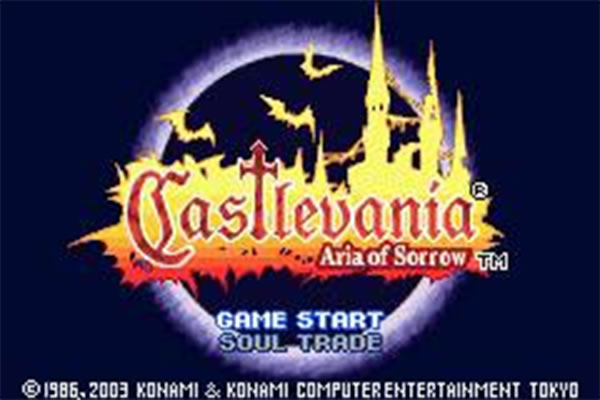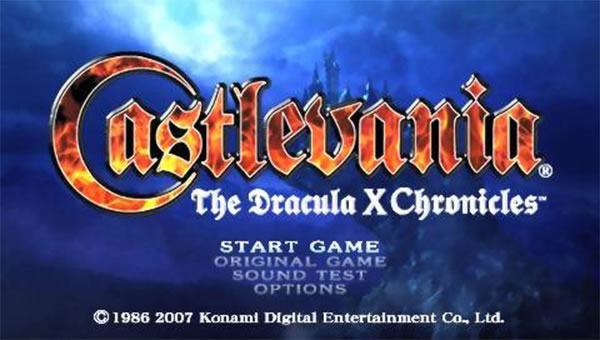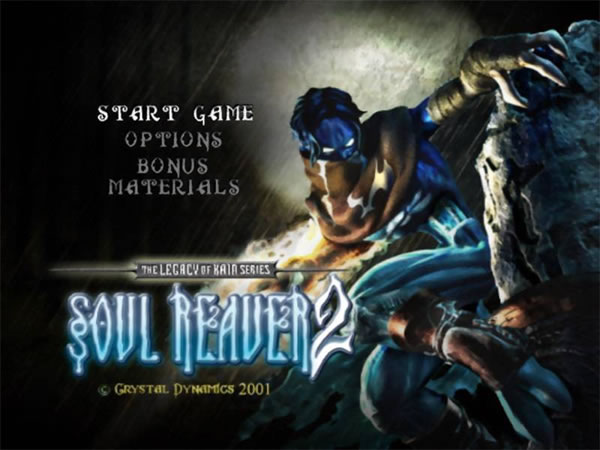- CLASSIC MAGAZINES
- REVIEW CREW
A show recapping what critics thought back
when classic games first came out! - NEXT GENERATION'S BEST & WORST
From the worst 1-star reviews to the best
5-stars can offer, this is Next Generation! - NINTENDO POWER (ARCHIVE)
Experience a variety of shows looking at the
often baffling history of Nintendo Power! - MAGAZINE RETROSPECTIVE
We're looking at the absolutely true history of
some of the most iconic game magazines ever! - SUPER PLAY'S TOP 600
The longest and most ambitious Super NES
countdown on the internet! - THEY SAID WHAT?
Debunking predictions and gossip found
in classic video game magazines! - NEXT GENERATION UNCOVERED
Cyril is back in this spin-off series, featuring the
cover critic review the art of Next Generation! - HARDCORE GAMER MAGAZING (PDF ISSUES)
Download all 36 issues of Hardcore Gamer
Magazine and relive the fun in PDF form!
- REVIEW CREW
- ELECTRONIC GAMING MONTHLY
- ELECTRONIC GAMING MONTHLY RANKS
From Mario to Sonic to Street Fighter, EGM
ranks classic game franchises and consoles! - ELECTRONIC GAMING MONTHLY BEST & WORST
Counting down EGM’s best and worst reviews
going year by year, from 1989 – 2009! - ELECTRONIC GAMING BEST & WORST AWARDS
11-part video series chronicling the ups and
downs of EGM’s Best & Worst Awards!
- ELECTRONIC GAMING MONTHLY RANKS
- GAME HISTORY
- GAME OVER: STORY BREAKDOWNS
Long-running series breaking down game
stories and analyzing their endings! - A BRIEF HISTORY OF GAMING w/ [NAME HERE]
Real history presented in a fun and pithy
format from a variety of game historians! - THE BLACK SHEEP
A series looking back at the black sheep
entries in popular game franchises! - INSTANT EXPERT
Everything you could possibly want to know
about a wide variety of gaming topics! - FREEZE FRAME
When something familiar happens in the games
industry, we're there to take a picture! - I'VE GOT YOUR NUMBER
Learn real video game history through a series
of number-themed episodes, starting at zero! - GREAT MOMENTS IN BAD ACTING
A joyous celebration of some of gaming's
absolute worst voice acting!
- GAME OVER: STORY BREAKDOWNS
- POPULAR SHOWS
- DG NEWS w/ LORNE RISELEY
Newsman Lorne Riseley hosts a regular
series looking at the hottest gaming news! - REVIEW REWIND
Cyril replays a game he reviewed 10+ years
ago to see if he got it right or wrong! - ON-RUNNING FEUDS
Defunct Games' longest-running show, with
editorials, observations and other fun oddities! - DEFUNCT GAMES QUIZ (ARCHIVE)
From online quizzes to game shows, we're
putting your video game knowledge to the test!- QUIZ: ONLINE PASS
Take a weekly quiz to see how well you know
the news and current gaming events! - QUIZ: KNOW THE GAME
One-on-one quiz show where contestants
find out if they actually know classic games! - QUIZ: THE LEADERBOARD
Can you guess the game based on the classic
review? Find out with The Leaderboard!
- QUIZ: ONLINE PASS
- DEFUNCT GAMES VS.
Cyril and the Defunct Games staff isn't afraid
to choose their favorite games and more! - CYRIL READS WORLDS OF POWER
Defunct Games recreates classic game
novelizations through the audio book format!
- DG NEWS w/ LORNE RISELEY
- COMEDY
- GAME EXPECTANCY
How long will your favorite hero live? We crunch
the numbers in this series about dying! - VIDEO GAME ADVICE
Famous game characters answer real personal
advice questions with a humorous slant! - FAKE GAMES: GUERILLA SCRAPBOOK
A long-running series about fake games and
the people who love them (covers included)! - WORST GAME EVER
A contest that attempts to create the worst
video game ever made, complete with covers! - LEVEL 1 STORIES
Literature based on the first stages of some
of your favorite classic video games! - THE COVER CRITIC
One of Defunct Games' earliest shows, Cover
Critic digs up some of the worst box art ever! - COMMERCIAL BREAK
Take a trip through some of the best and
worst video game advertisements of all time! - COMIC BOOK MODS
You've never seen comics like this before.
A curious mix of rewritten video game comics!
- GAME EXPECTANCY
- SERIES ARCHIVE
- NINTENDO SWITCH ONLINE ARCHIVE
A regularly-updated list of every Nintendo
Switch Online release, plus links to review! - PLAYSTATION PLUS CLASSIC ARCHIVE
A comprehensive list of every PlayStation
Plus classic release, including links! - RETRO-BIT PUBLISHING ARCHIVE
A regularly-updated list of every Retro-Bit
game released! - REVIEW MARATHONS w/ ADAM WALLACE
Join critic Adam Wallace as he takes us on a
classic review marathon with different themes!- DEFUNCT GAMES GOLF CLUB
Adam Wallace takes to the links to slice his way
through 72 classic golf game reviews! - 007 IN PIXELS
Adam Wallace takes on the world's greatest spy
as he reviews 15 weeks of James Bond games! - A SALUTE TO VAMPIRES
Adam Wallace is sinking his teeth into a series
covering Castlevania, BloodRayne and more! - CAPCOM'S CURSE
Adam Wallace is celebrating 13 days of Halloween
with a line-up of Capcom's scariest games! - THE FALL OF SUPERMAN
Adam Wallace is a man of steel for playing
some of the absolute worst Superman games! - THE 31 GAMES OF HALLOWEEN
Adam Wallace spends every day of October afraid
as he reviews some of the scariest games ever! - 12 WEEKS OF STAR TREK
Adam Wallace boldly goes where no critic has
gone before in this Star Trek marathon!
- DEFUNCT GAMES GOLF CLUB
- DAYS OF CHRISTMAS (ARCHIVE)
Annual holiday series with themed-episodes
that date all the way back to 2001!- 2015: 30 Ridiculous Retro Rumors
- 2014: 29 Magazines of Christmas
- 2013: 29 Questionable Power-Ups of Christmas
- 2012: 34 Theme Songs of Christmas
- 2011: 32 Game Endings of Christmas
- 2010: 31 Bonus Levels of Christmas
- 2009: 30 Genres of Christmas
- 2008: 29 Controls of Christmas
- 2007: 34 Cliches of Christmas
- 2006: 33 Consoles of Christmas
- 2005: 32 Articles of Christmas
- 2004: 31 Websites of Christmas
- 2003: 29 Issues of Christmas
- 2002: 28 Years of Christmas
- 2001: 33 Days of Christmas
- NINTENDO SWITCH ONLINE ARCHIVE
- REVIEW ARCHIVE
- FULL ARCHIVE
Psychic Killer Taroumaru
Shinrei Jusatsushi Taromaru. Psychic Assassin Taroumaru. Spirit Killer Taromaru. No matter what one calls it, this is without a doubt the rarest of games for the Sega Saturn. With a mere 7,500 units printed before Time Warner Interactive folded, Psychic Killer Taroumaru is definitely one game every collector should be actively trying to get. While the game does appear on places like eBay and Game Trading Zone from time to time, you can be sure to pay at least $200 USD for a copy in decent condition. While the undeniable rarity of the game makes the triple digit price seem almost palatable, but does the actual game warrant the cost?
Published by Time Warner Interactive very shortly before unceremoniously shutting down after the Midway Games acquisition, Psychic Killer Taroumaru for Sega Saturn is a port of the similarly named (and similarly rare) arcade Sega ST-V game. The player dons the sandals of a man hired to save a man's only daughter from the evil army that has kidnapped her and countless other women. With tuned psychic abilities, the player makes his way through level after level of enemies and bosses in order to kill the baddies, get the girl, and disappear, ninja-style, into the sunset. While the story has been heard countless times, the refined gameplay makes the journey through the game immensely enjoyable.
Upon starting the game, one is greeted with his character and an icon. The icon drifts to various enemies, depending on where the player's character is facing, and may be shifted between multiple enemies via taps on the shoulder buttons. Pressing the B button attacks the enemy, and one can hold down the button and release it for an extra powerful shot reminiscent of Mega Man. Some enemies, however, can be brought to fight for the players cause by using the A button instead of the B button, changing the enemy's color, giving him a life meter, and causing him to attack any enemies he comes across in zombie-like fashion. If he's about to die or the player would wish to discard him, pressing the X button will give him a death resulting in a smart-bomb like attack on all enemies. Pressing the A button next to him while he is not at full power causes the player's score to decrease and his energy to increase. A double-tap down (or pressing the Y button) gives the player a temporary shield from all attacks, a down-C executes a dashing move, and that is the complete arsenal of moves. The control scheme is internalized after but a minute of play and timing feels very natural.
On the receiving end of these attacks are a plethora of enemies, from ninja and shrine priestesses to centipedes and skeletons. While the normal enemies are fairly unremarkable, the game has excellent bosses, with designs that rival even Treasure's repertoire of games. A boss appears nearly every other minute, and each is very unique: a brown orb which sends green fire and wall tiles in attack; a skeleton's torso that throws fire at you and must be defeated in that way; a frog's stomach, threatening the player with deadly worms and acid. There's even a monster that must be defeated while in a Temple of Doom-like mine cart chase. Character designs run the gamut and are quite fun to look at.
For an arcade game from 1996 the graphics are pretty good. They are varied and the designs of enemies are nice. The colors are not much to look at, and one might wish that they could be smoother or more vibrant. As it is, there is a lot of brown in this game. If only the colors were as varied as the designs for the bosses. There's not much animation here, and the sprites are on the small side; if it wasn't for the smoothness of the game and the pieces of 3D which pop up here and there, one might confuse this for a 16-bit era console game. Still, the graphics do the job well enough.
The music for the game is Red Book audio, which was pretty standard back then, but these days, is unusual. The extra fidelity of the music doesn't seem to mesh very well with the rather low fidelity sound effects. Voices and effects have little strength and top end to them, with the sole exception of the "shot charging up" sound effect which one will be constantly hearing throughout the game. The music is decent, well mixed synth-orchestral and traditional Japanese instruments which isn't too memorable, but accompanies the onscreen action very well.
The most pressing argument against the game is its length, as it is little more than a straight arcade port plus a simple ranking mode. Beating the game requires little more than an hour of your time, and less once you understand all the bosses. With two players, the game becomes rather easy. This, however, is not enough to keep me from thoroughly enjoying the game. It has solid and interesting gameplay and decent technical components, but is it worth the couple of hundreds of dollars that a seller will probably ask? That depends on where your priorities are. Many will find little in the game after beating it; little more than a solid game play concept fleshed out, this game is not for them. If you are an ardent fan of arcade 2D action, then Psychic Killer Taroumaru is a fine game to add to the collection.
Published by Time Warner Interactive very shortly before unceremoniously shutting down after the Midway Games acquisition, Psychic Killer Taroumaru for Sega Saturn is a port of the similarly named (and similarly rare) arcade Sega ST-V game. The player dons the sandals of a man hired to save a man's only daughter from the evil army that has kidnapped her and countless other women. With tuned psychic abilities, the player makes his way through level after level of enemies and bosses in order to kill the baddies, get the girl, and disappear, ninja-style, into the sunset. While the story has been heard countless times, the refined gameplay makes the journey through the game immensely enjoyable.
Upon starting the game, one is greeted with his character and an icon. The icon drifts to various enemies, depending on where the player's character is facing, and may be shifted between multiple enemies via taps on the shoulder buttons. Pressing the B button attacks the enemy, and one can hold down the button and release it for an extra powerful shot reminiscent of Mega Man. Some enemies, however, can be brought to fight for the players cause by using the A button instead of the B button, changing the enemy's color, giving him a life meter, and causing him to attack any enemies he comes across in zombie-like fashion. If he's about to die or the player would wish to discard him, pressing the X button will give him a death resulting in a smart-bomb like attack on all enemies. Pressing the A button next to him while he is not at full power causes the player's score to decrease and his energy to increase. A double-tap down (or pressing the Y button) gives the player a temporary shield from all attacks, a down-C executes a dashing move, and that is the complete arsenal of moves. The control scheme is internalized after but a minute of play and timing feels very natural.
On the receiving end of these attacks are a plethora of enemies, from ninja and shrine priestesses to centipedes and skeletons. While the normal enemies are fairly unremarkable, the game has excellent bosses, with designs that rival even Treasure's repertoire of games. A boss appears nearly every other minute, and each is very unique: a brown orb which sends green fire and wall tiles in attack; a skeleton's torso that throws fire at you and must be defeated in that way; a frog's stomach, threatening the player with deadly worms and acid. There's even a monster that must be defeated while in a Temple of Doom-like mine cart chase. Character designs run the gamut and are quite fun to look at.
For an arcade game from 1996 the graphics are pretty good. They are varied and the designs of enemies are nice. The colors are not much to look at, and one might wish that they could be smoother or more vibrant. As it is, there is a lot of brown in this game. If only the colors were as varied as the designs for the bosses. There's not much animation here, and the sprites are on the small side; if it wasn't for the smoothness of the game and the pieces of 3D which pop up here and there, one might confuse this for a 16-bit era console game. Still, the graphics do the job well enough.
The music for the game is Red Book audio, which was pretty standard back then, but these days, is unusual. The extra fidelity of the music doesn't seem to mesh very well with the rather low fidelity sound effects. Voices and effects have little strength and top end to them, with the sole exception of the "shot charging up" sound effect which one will be constantly hearing throughout the game. The music is decent, well mixed synth-orchestral and traditional Japanese instruments which isn't too memorable, but accompanies the onscreen action very well.
The most pressing argument against the game is its length, as it is little more than a straight arcade port plus a simple ranking mode. Beating the game requires little more than an hour of your time, and less once you understand all the bosses. With two players, the game becomes rather easy. This, however, is not enough to keep me from thoroughly enjoying the game. It has solid and interesting gameplay and decent technical components, but is it worth the couple of hundreds of dollars that a seller will probably ask? That depends on where your priorities are. Many will find little in the game after beating it; little more than a solid game play concept fleshed out, this game is not for them. If you are an ardent fan of arcade 2D action, then Psychic Killer Taroumaru is a fine game to add to the collection.
HOME |
CONTACT |
NOW HIRING |
WHAT IS DEFUNCT GAMES? |
NINTENDO SWITCH ONLINE |
RETRO-BIT PUBLISHING
Retro-Bit |
Switch Planet |
The Halcyon Show |
Same Name, Different Game |
Dragnix |
Press the Buttons
Game Zone Online | Hardcore Gamer | The Dreamcast Junkyard | Video Game Blogger
Dr Strife | Games For Lunch | Mondo Cool Cast | Boxed Pixels | Sega CD Universe | Gaming Trend
Game Zone Online | Hardcore Gamer | The Dreamcast Junkyard | Video Game Blogger
Dr Strife | Games For Lunch | Mondo Cool Cast | Boxed Pixels | Sega CD Universe | Gaming Trend
Copyright © 2001-2025 Defunct Games
All rights reserved. All trademarks are properties of their respective owners.
All rights reserved. All trademarks are properties of their respective owners.






